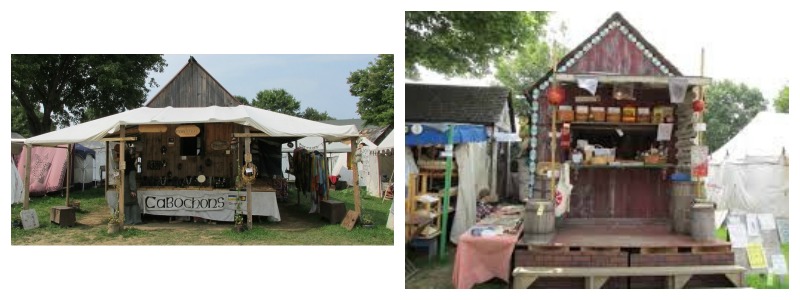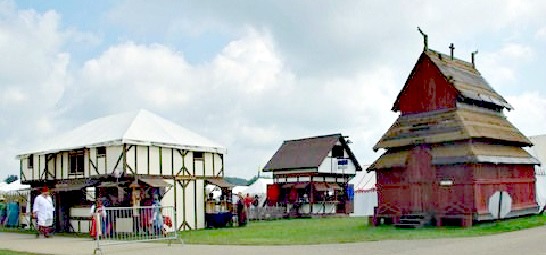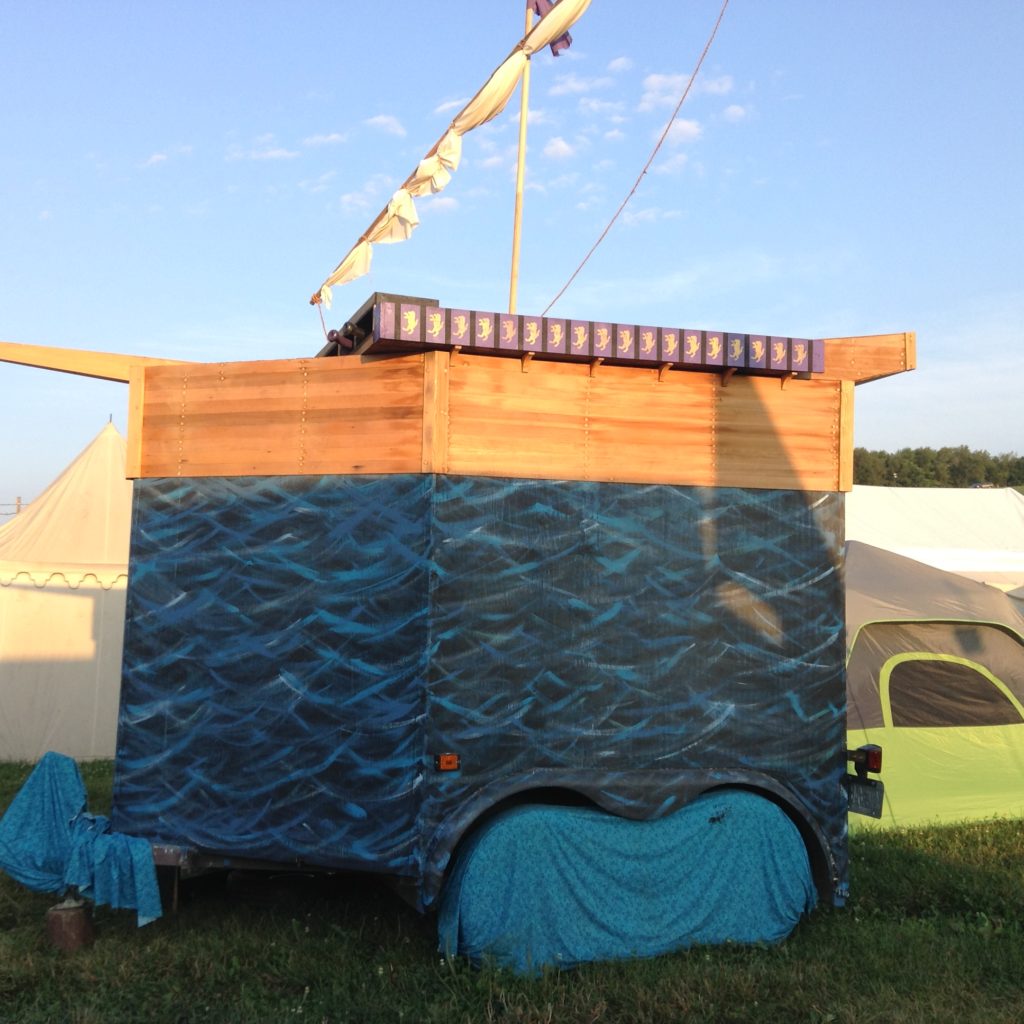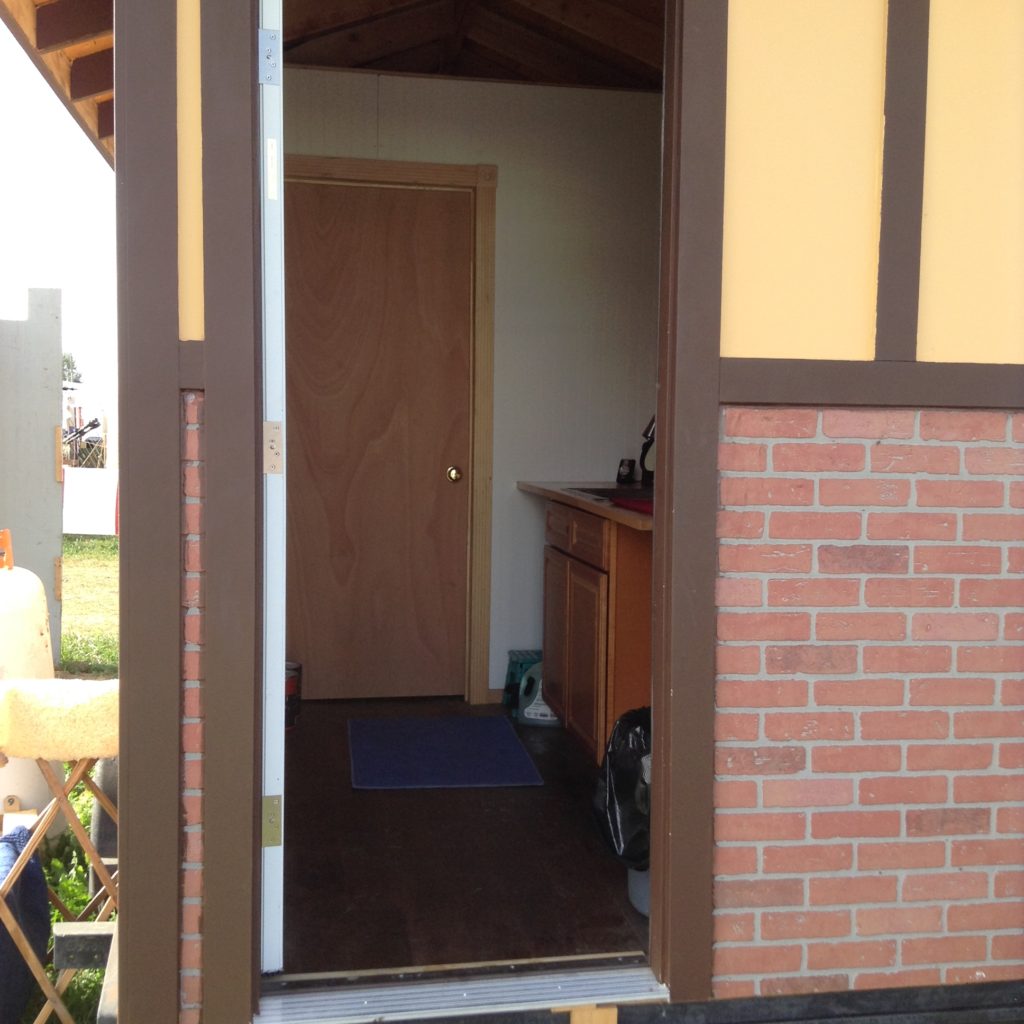Living Quarters, kitchens, shower trucks… what else could Vardos and trailers possibly be used for? Well, during my tenure at Pennsic there have been a bunch of shops that used wagons as the basis for their set up. The first one that I was aware of was the Old Stave Church, which sadly is no more. It was built on a tall trailer, and was actually something of a pain to get in and out of, and for its height had relatively little floor space. It was used as a shop for many years and always contained an interesting collection of things that ranged from fossils, to bars of pure tin (I own several), and scribal supplies like gold and silver leaf (I own a bunch of those, too). I went looking for a picture of it in my photo stash, but I didn’t have one, but then I found this great picture on the web, that includes both the Stave Church and the wagon/building that is used by Laurel Cavanaugh Goldsmith.
The Stave Church is obviously on the right, and the wagon used by Laurel is in the middle. The two story building on the left side is actually assembled on site every year from bolt-together panels, and is home to five or six merchants, ranging from potters, to several jewelers, and Billy and Charley’s Pewter shop.
The newest wagon/shop to appear at Pennsic is owned by The Haunted Bookshop. They decided that having a permanent place to display all of their books was preferable to setting up a tent and dragging out tons of boxes of books at each event. There also used to be a fabric shop over near the barn that used a trailer for their shop, and Klaus the Toymaker, The Guild of Limners, and Heart of Oak Crafts have been in wagons for as long as I can remember. At other wars I know of a knife/sword merchant who works and lives in his wagon/shop for comfort and security. We have actually considered a Vardo for smaller events, with a quick set-up shop under an awning.
 Heart of Oak on the left and Klaus the Toymaker on the right.
Heart of Oak on the left and Klaus the Toymaker on the right.
In closing I would like to add a few random thoughts, in no particular order, for those considering making their own Vardo.
Understanding what your state’s vehicle laws are for trailers, campers and RV’s would probably be a good idea. Some states are very lenient and some require multiple inspections. Generally people are not permitted to ride in any sort of RV or trailer during transport (except for Class A RV’s obviously), for safety reasons.
A friend who built a Vardo also mentioned that when you buy a trailer, be sure that the trailer uses tires that can be easily purchased. Some inexpensive utility trailers use odd sized tires that may have to be specially ordered, which could be a real problem if you needed to replace one or more while you are on the road.
If you want more information there are at least two active Vardo Groups on Facebook: SCA, Vardo Trails: Vardos, Roma ‘Gypsy Style’ Wagons and Camping and Gypsy Vardo- The Original Tiny House




